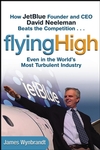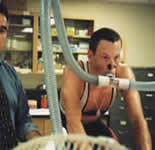I’ve heard some skepticism towards business design, which is healthy and quite justified given that no one has shown concrete examples of it yet. One reason for this is that examples are difficult to describe; the application of design thinking to business situations is highly contextual and — as the name states — has much to do with how people think.
I recently encountered a situation where I thought design thinking could improve a problem-solving process. It’s small and simple, but often difficult to put into practice because it challenges the way organizations work.
Let’s say a mail order company’s Customer Service group reports that an usually high number of products are being returned. Someone in management might request some data and generate a hypothesis about what is happening. Then they might come up with an idea for fixing it and implement the idea. Or, maybe two good ideas are analyzed and the better one is implemented, thusly:

Another way to process this problem is to consciously inject elements of design thinking into it. Starting with the data, the manager could collaborate with a partner or a team and use creativity techniques to abductively generate several hypotheses for what is causing the unusually high number of product returns. They could then run an experiment and test the best hypotheses with customers to understand the unique and personal issues behind the problem. With both quantitative and qualitative information in hand, the team starts to integrate this information and interpret it while creatively generating a number of possible solutions. The solutions are analyzed for potential and tested with customers, and the best one is launched.

The second approach is unquestionably more work, but strives to find a better answer with less risk. Remaining agile is all in the execution.
This isn’t new or radical thinking, it’s just new and radical for organizations whose cultures are suffering and need to change.
 And then there’s borderline cases. Recently Hershey extended its
And then there’s borderline cases. Recently Hershey extended its  Just finished James Wynbrandt’s
Just finished James Wynbrandt’s  It turns out that intense, long-term cardio training actually enlarges the heart and therefore the amount of oxygen-rich blood that can be delivered to the muscles, according to this
It turns out that intense, long-term cardio training actually enlarges the heart and therefore the amount of oxygen-rich blood that can be delivered to the muscles, according to this 

 In all the hoo-hah about China’s economy we almost never hear of the human rights situation there anymore. The reason is not that the situation has vastly improved, in fact it’s
In all the hoo-hah about China’s economy we almost never hear of the human rights situation there anymore. The reason is not that the situation has vastly improved, in fact it’s 